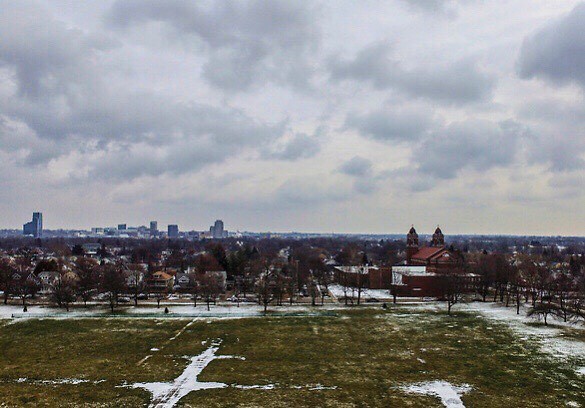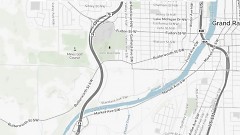Living on the westside of Grand Rapids has always had its own unique pride and challenges. There was a time before gentrification when many residents felt the westside was not important to the city. There was a time when the city used it as a dump that is a toxic site known as the former Butterworth Dump. It was also a time when mining underground for gypsum was felt and heard.
“When my dad grew up John Ball Park was a swap area,” long-time Westsider Phyllis Burke said. “It’s all filled in now, I can't dig in my yard without coming up with debris and rocks.”
Many proud Westsiders still remember the days when gypsum mining was a strong business.
“Everyday after school we could hear and feel the blasts,” said Maryanne Myles McIntyre on the We are Westsiders Facebook group.
Marjorie Womble said the same thing in her interview, “When we first moved in, in 1961 when my parents bought the house you could hear the blasting and feel a little bit."
Still others can remember relatives working in the mines such as sisters Burke and Womble did. They had two uncles that worked in the mines.
“It was a very dirty job. My one uncle was living with our parents and he would come home and just be white [from the gypsum] so my mom would have to wash his clothes everyday,” said Burke.
Womble added, “If you were to drive out Butterworth Road it would look as if it had snowed because all the gypsum dust was in the air and had settled on everything and anything that was there.”
During our interview both sisters felt that the Westside was never important to the city.
“It irritates me know that they keep moving the borders of the city. Everyone has lost the concept of what a downtown is, that's what the concern is,” said Burke. “They are building on top of a filled in swamp.”
“I remember many years ago, perhaps twenty or thirty, there was a large hole right on Butterworth Street. I'm not sure but I think a car almost ran into it or maybe did,” Betty Bartlett noted on the We are Westsiders Facebook group.
Julie Rathsack added, “That was directly next door to my uncle's house and across the street from my grandparents. Across the street from 262 Garfield. To this day, there's nothing but an open field there. One day, while playing football over there in the 1980's, my brother's entire leg was swallowed up into a hole. After that, we weren't allowed to play there.”
The house located at 269 Garfield SW did sink on September 27, 1965.
Are there other areas of the Westside in danger of sinking? This is the second article in a series exploring what it means to have an extensive network of mines and filled in wetlands in the same area a lot of new business development is taking place on the Westside.
The Rapidian, a program of the 501(c)3 nonprofit Community Media Center, relies on the community’s support to help cover the cost of training reporters and publishing content.
We need your help.
If each of our readers and content creators who values this community platform help support its creation and maintenance, The Rapidian can continue to educate and facilitate a conversation around issues for years to come.
Please support The Rapidian and make a contribution today.


